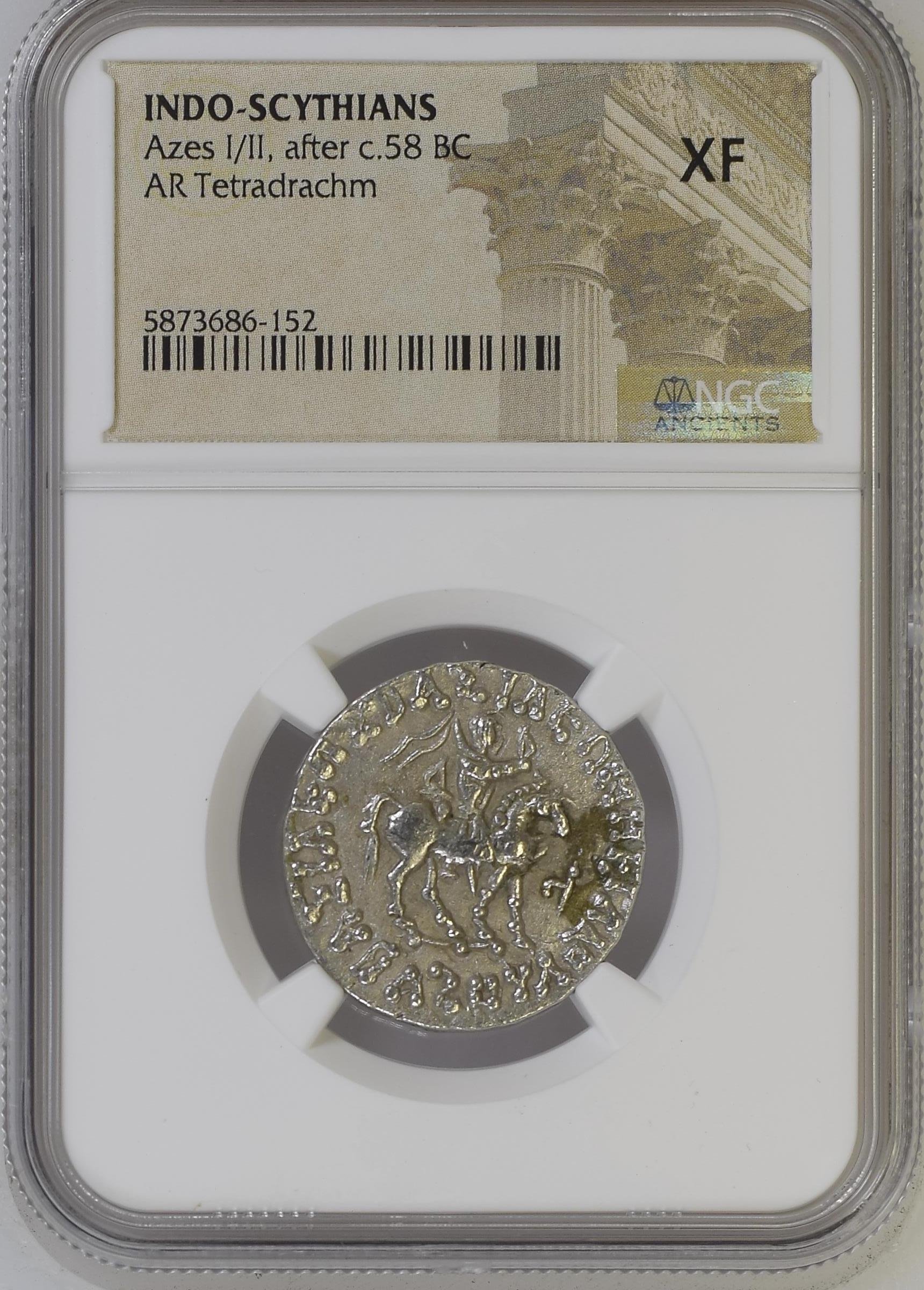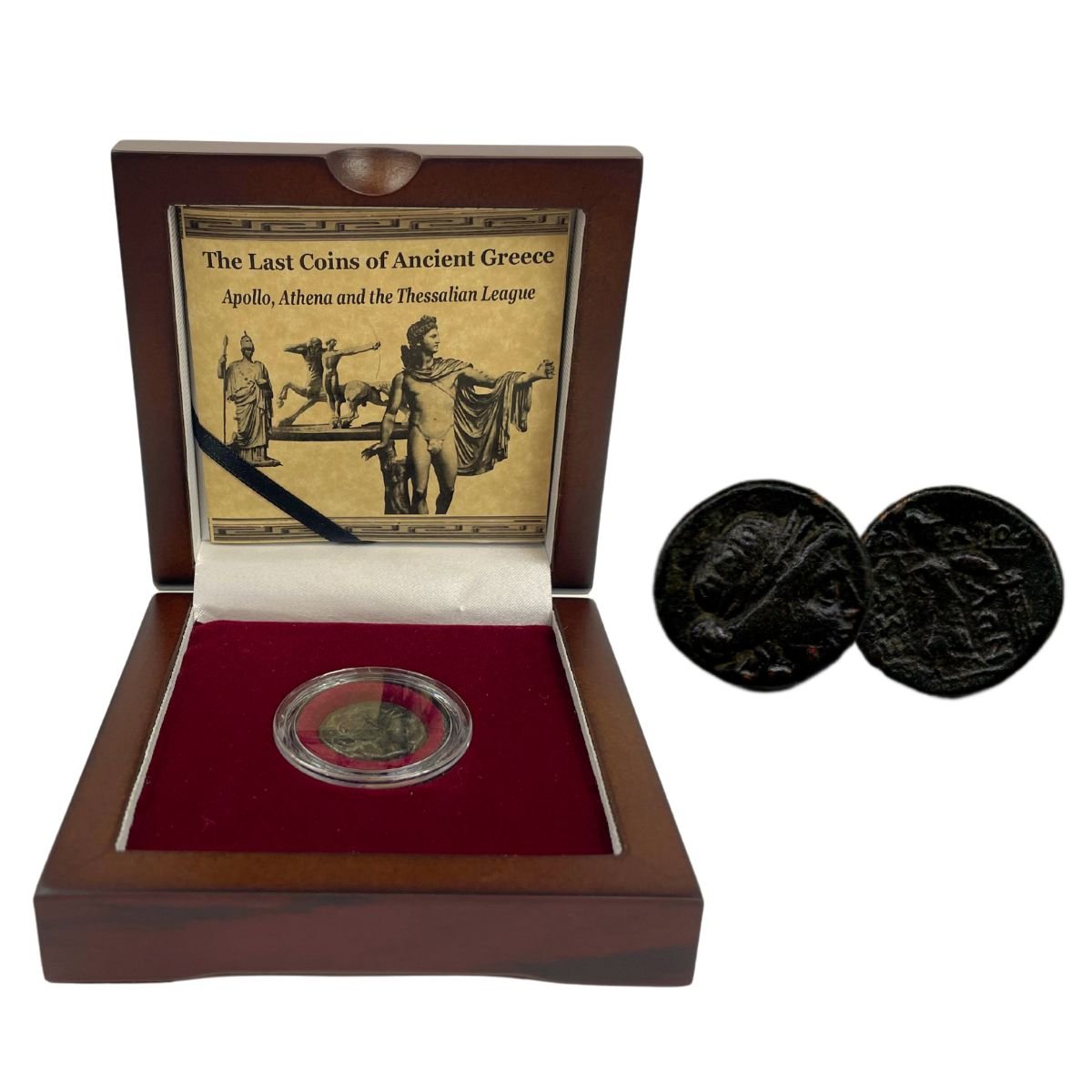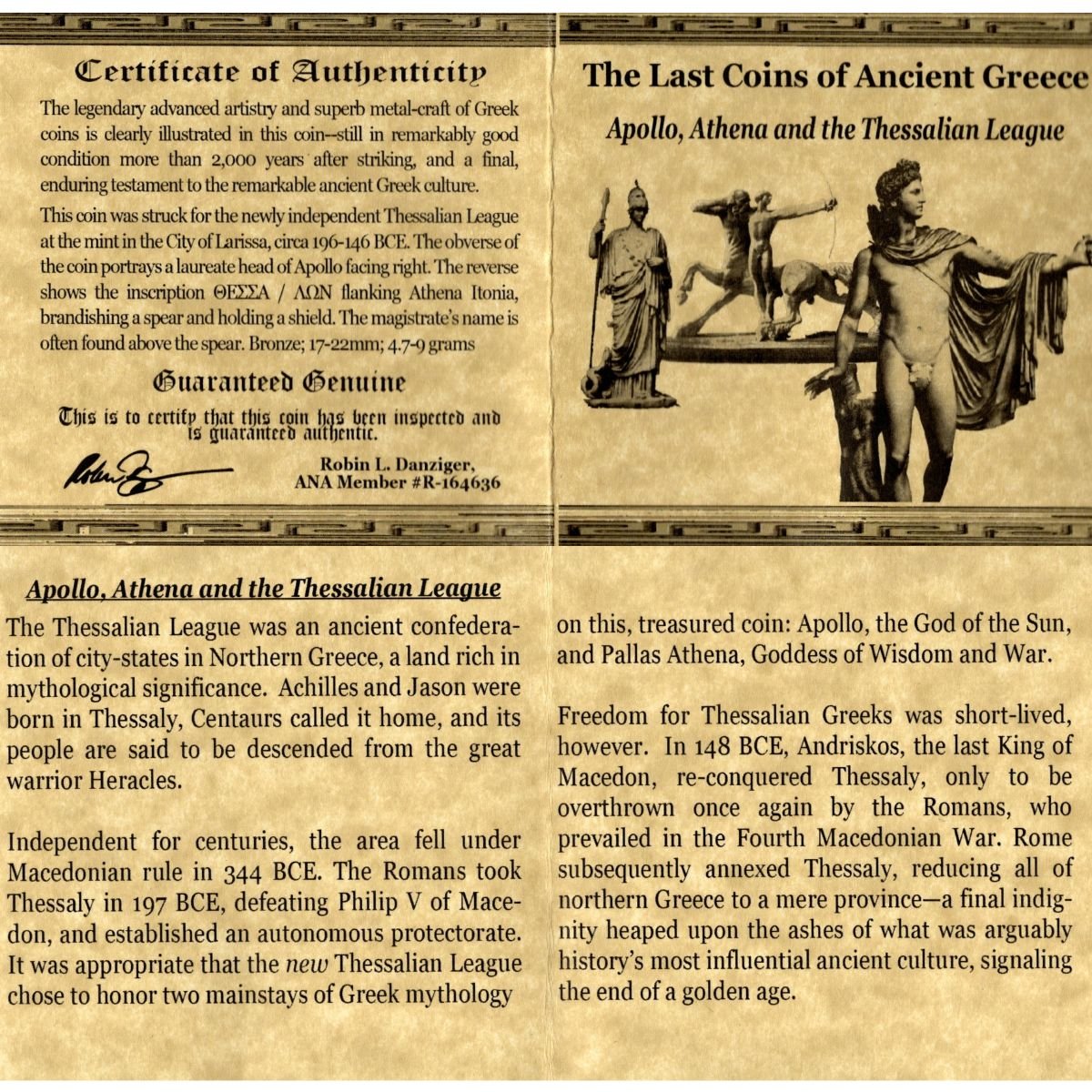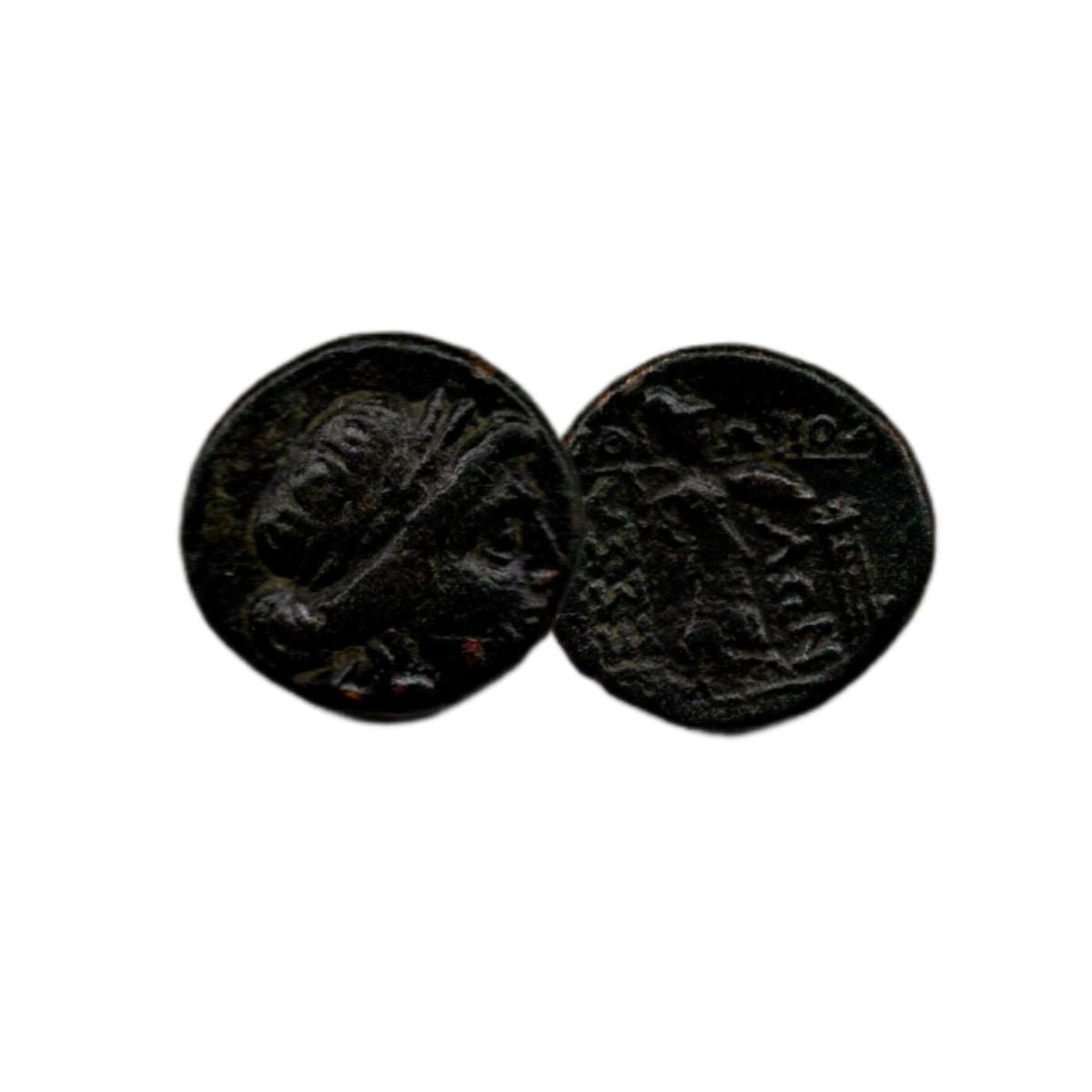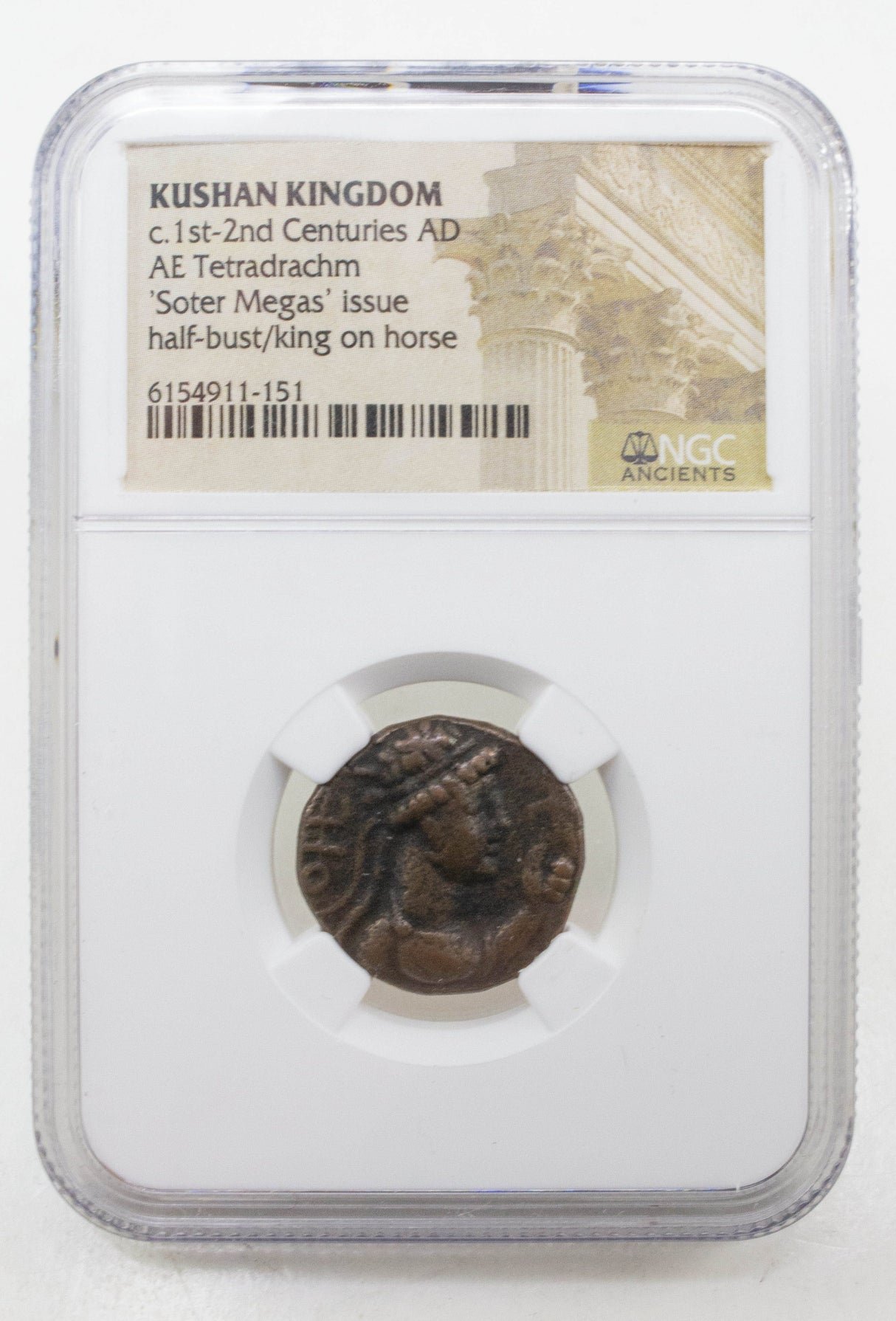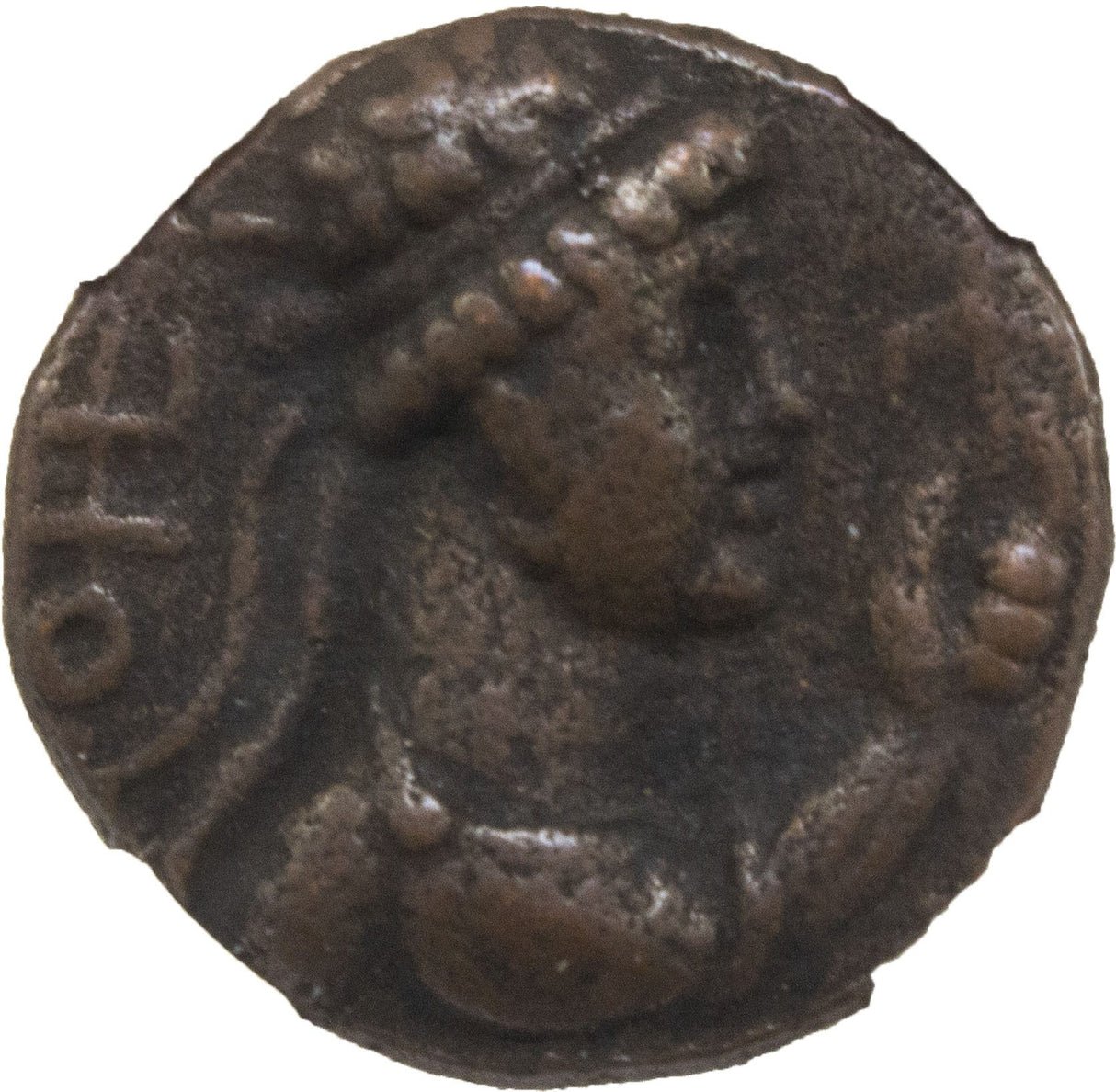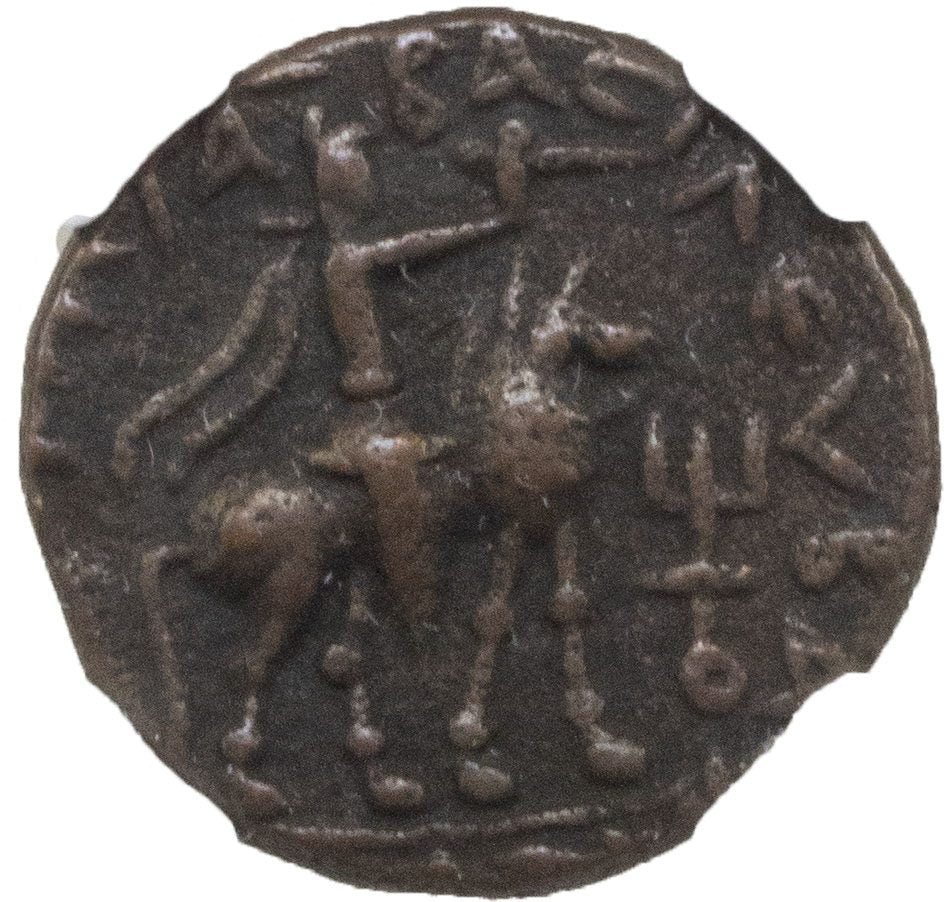Azes II (Greek: Ἄζης ‹See RfD› Azēs, epigraphically ΑΖΟΥ ‹See RfD› Azou; Kharosthi: 𐨀𐨩 ‹See RfD› A-ya, ‹See RfD› Aya[1]), may have been the last Indo-Scythian king, speculated to have reigned circa 35–12 BCE, in what is Pakistan today. His existence has been questioned; if he did not exist, artefacts attributed to his reign, such as coins, are likely to be those of Azes I.[2]
After the death of Azes II, the rule of the Indo-Scythians in northwestern India and Pakistan finally crumbled with the conquest of the Kushans, one of the five tribes of the Yuezhi who had lived in Bactria for more than a century, and who were then expanding into India to create a Kushan Empire. Soon after, the Parthians invaded from the west. Their leader Gondophares temporarily displaced the Kushans and founded the Indo-Parthian Kingdom that was to last until the middle of the 1st century CE. The Kushans ultimately regained northwestern India circa 75 CE, where they were to prosper for several centuries.
Azes's name is attested on his coins in the Greek form ‹See RfD› Azēs (Ἄζης) and the Kharosthi form ‹See RfD› Aya (𐨀𐨩),[1] which are both derived from the Saka name *Aza, meaning "leader".[3]


